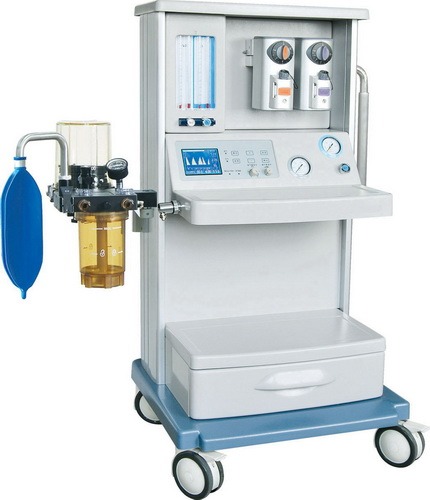Anesthesia workstations are the unsung heroes of modern operating rooms, ensuring patient safety and comfort during surgeries. These sophisticated devices have evolved significantly, integrating cutting-edge technology with robust safety measures. This blog dives deep into anesthesia workstations, exploring their components, safety protocols, and advancements. Let's break it down for professionals and curious readers alike.
What Are Anesthesia Workstations?
An anesthesia workstation is a medical device that supports anesthesiologists in delivering and monitoring anesthesia to patients. These systems combine multiple functions—gas delivery, ventilation, monitoring, and data integration—into one machine.
The Evolution
| Era | Features | Limitations |
|---|---|---|
| Early 20th Century | Basic gas delivery systems | No integrated monitoring |
| Mid-20th Century | Addition of manual ventilation | Limited automation |
| Modern Workstations | Integrated monitors, alarms, and electronic controls | Dependence on electricity |
Modern systems are designed to reduce human error, enhance precision, and improve patient safety.
Key Components of Modern Anesthesia Workstations
A well-functioning anesthesia workstation includes several crucial components:
- Gas Delivery Systems
Supply medical gases like oxygen, nitrous oxide, and air while ensuring the correct concentration.
Pro Tip: Regular calibration of flowmeters prevents gas delivery errors. - Vaporizers
These convert liquid anesthetic agents into vapors.
Example: Isoflurane vaporizers ensure consistent delivery, critical for maintaining stable anesthesia depth. - Ventilators
Modern ventilators can automatically adjust to patient needs, ensuring adequate oxygenation. - Monitoring Systems
Real-time tracking of parameters like blood oxygen levels (SpO2), blood pressure, and respiratory rate. - Scavenging Systems
Essential for removing waste anesthetic gases, reducing pollution in the operating room.
Safety First: Protocols and Features
Anesthesia workstations are equipped with advanced safety mechanisms. These include:
Built-In Alarms
- Alerts for hypoxia, high pressure, or disconnection.
- Example: The "oxygen failure alarm" activates if oxygen supply drops below safe levels.
Routine Maintenance
- Regular inspections ensure the reliability of critical components.
- Checklist for Daily Maintenance:
- Verify gas supply.
- Test alarms and ventilation systems.
- Check connections for leaks.
Fail-Safe Mechanisms
- Systems like "pin-index safety" prevent incorrect gas cylinder connections.
Did You Know? A study in Anesthesia & Analgesia found that 70% of anesthesia workstation malfunctions were preventable with regular maintenance.
Answering Common Questions About Anesthesia Workstations
We’ve gathered frequently asked questions from professionals and patients alike to address key concerns.
| Question | Answer |
|---|---|
| How do workstations ensure patient safety? | Through real-time monitoring, fail-safes, and routine maintenance. |
| How often should workstations be inspected? | Daily pre-use checks and quarterly professional maintenance are recommended. |
| Can they integrate with electronic records? | Yes, modern systems often sync with EHRs for seamless data sharing. |
| What happens during power outages? | Most systems have battery backups lasting 30–60 minutes. Emergency manual ventilation is an option. |
Have questions? We offer free consultation.
Advancements in Anesthesia Workstation Technology
Modern anesthesia workstations are rapidly evolving. Key innovations include:
Integration with Electronic Health Records (EHR)
- Real-time syncing of patient data for better coordination.
Enhanced Monitoring Capabilities
- AI-powered systems predict patient responses to anesthesia, enabling proactive adjustments.
Portable Models
- Lightweight, battery-powered workstations are now available for field surgeries or disaster relief.
Data Snapshot
- A report from Global Medical Devices Market (2023) indicates a projected 5.6% CAGR growth in anesthesia workstation technology, driven by AI and IoT integration.
Environmental Considerations
One concern with anesthesia workstations is the environmental impact of waste gases.
| Gas | Global Warming Potential (GWP) | Mitigation Efforts |
|---|---|---|
| Nitrous Oxide | 298 | Use scavenging systems, optimize gas delivery. |
| Desflurane | 2,540 | Transition to eco-friendly alternatives. |
Hospitals worldwide are adopting sustainable practices to reduce their carbon footprint.
Conclusion: Why Understanding Matters
Anesthesia workstations are indispensable in modern medicine. For healthcare professionals, understanding their components, safety features, and advancements is critical to providing top-notch care. For the rest of us, appreciating these marvels underscores the intricate work that ensures patient safety during surgery.
Checklist for Healthcare Professionals
- ✅ Conduct daily workstation checks.
- ✅ Train staff on operating procedures.
- ✅ Stay updated on new technologies and guidelines.
- ✅ Engage in continuous education on anesthesia best practices.
By ensuring your anesthesia workstation is in top shape, you not only enhance patient safety but also contribute to a more efficient healthcare system.
→Click here to learn more about our Anesthesia Machine
or
